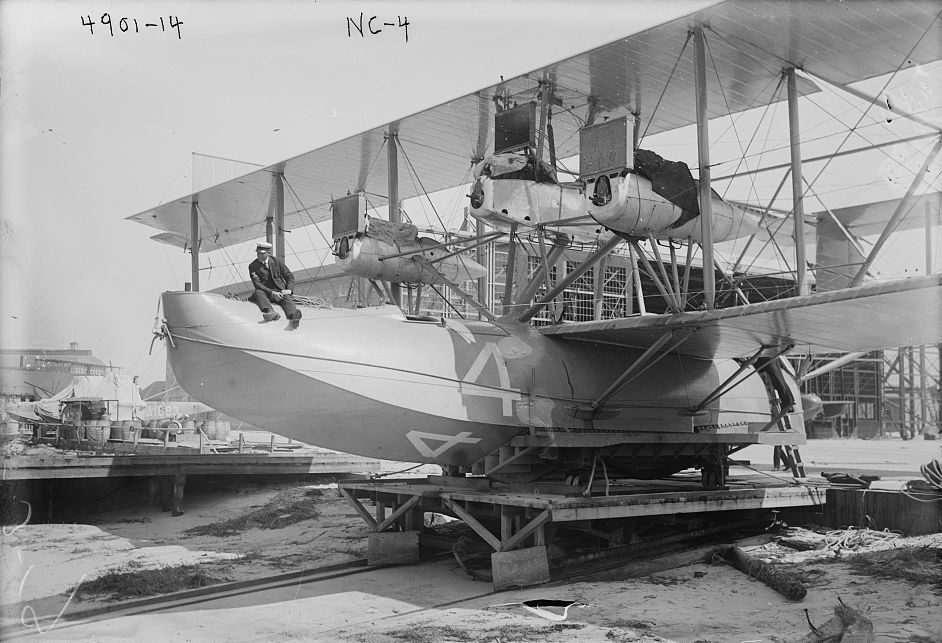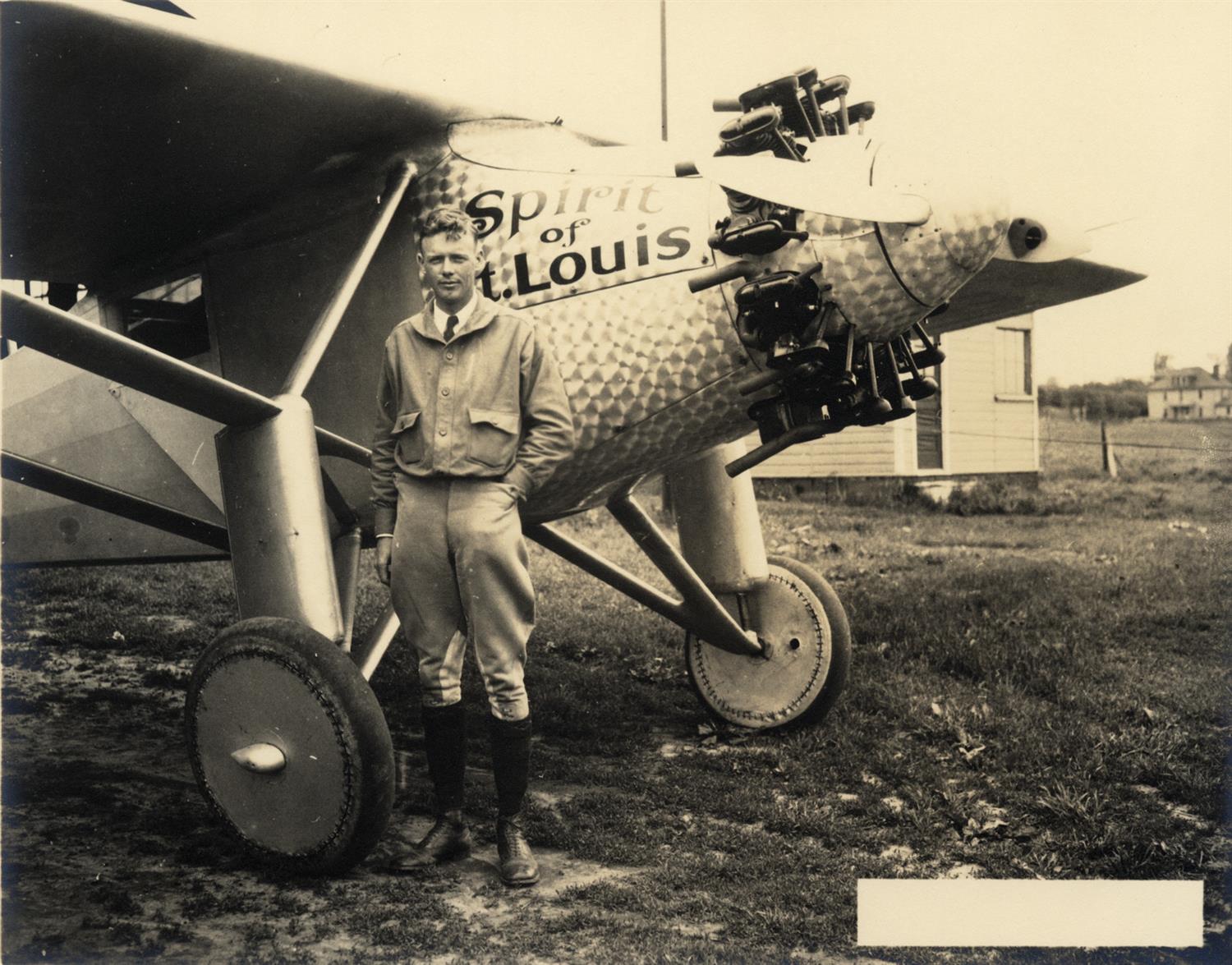Proofs of concept: longer distances in flight
Beginnings
28 October 2020
In 1910, Wilbur and Orville Wright sued Glenn Curtiss and his airplane company for infringing on their intellectual property by using aileron-like flaps to achieve lateral stability. After a fierce patent battle the court ruled in favor of the Wrights, but it was Curtiss who had the last laugh.
The Wrights are renowned for their breakthroughs in aviation, notably the first powered heavier-than-air flight. Their success faded afterwards as they became consumed in litigation, while other eager airplane manufacturers continued to innovate and improve upon their airplanes. The Curtiss company was one of those companies whose work far surpassed that of the Wrights.
By 1918, Curtiss had secured an agreement with the US Navy to build a flying boat, the NC-4 with the intention of crossing the Atlantic. Early skeptics criticized Curtiss, saying that there was no way planes could cross the Atlantic at their current state. But the next year, a group of four Curtiss aircraft, one a NC-4, began a journey from Rockaway, New York to the Azores. Although the planes took several stops along the way, the NC-4 successfully made the journey, representing the first transatlantic flight.

A Curtiss NC-4 Under Construction in New York, 1919. Image via Library of Congress.

Charles Lindbergh next to The Spirit of St. Louis in 1927. Image via Yale University Library, © P. & A. Photos.
Just one month later, Jack Alcock and Arthur Whitten Brown flew in a Vickers Vimy flew from St. Johns, Newfoundland to Clifden, Ireland, making the first nonstop transatlantic flight. In 1927, Charles Lindbergh rose to fame for making the first solo nonstop transatlantic flight, from New York to Paris in The Spirit of St. Louis.
Distance records went in the other direction as well. In 1923, pilots from the US Army Air Service flew the Fokker F.IV (T-2) from New York to San Diego in the first nonstop transcontinental flight. The next year, Army Air Service pilots circumnavigated the globe by air for the first time over the course of 175 days.
It’s fascinating to think that just 16 years after the Wright brothers’ first powered flight, airplanes were already advanced enough to cross the Atlantic Ocean. As airplanes flew farther and longer, the age of flight became less of a dream and more of a reality that would go on to change the world.
References
- Brooks, Peter W. "Alcock and Brown: Flight Across the Sea." Aerospace Historian 28, no. 3 (1981): 173-79. Accessed October 29, 2020. http://www.jstor.org/stable/44523608.
- Casey, Louis S. "Curtiss: The Hammondsport Era 1907-1915." Aerospace Historian 28, no. 3 (1981): 156-63. Accessed October 29, 2020. http://www.jstor.org/stable/44523606.
- "First Flight Around the World." Pioneers of Flight. Smithsonian National Air and Space Museum. Accessed October 29, 2020. https://pioneersofflight.si.edu/content/first-flight-around-world.
- "The First Nonstop Transcontinental Flight." Pioneers of Flight. Smithsonian National Air and Space Museum. Accessed October 29, 2020. https://pioneersofflight.si.edu/content/first-nonstop-transcontinental-flight.
- Green, Horace. ""we" Reveals Lindbergh as More Careful than Lucky: His Own Narrative, as Well as His Biography, Demonstrates His Practical Genius " WE." by Charles A. Lindbergh. with a Foreword by Myron T. Herrick, United States Ambassador to France. Illustrated. New York: G.P. Putnam's Sons. $2.50. CHARLES LINDBERGH: HIS LIFE. by Dale Van Every and Morris D. Tracy. with an Introduction by Karl A. Bickel. Illustrated. New York: D. Appleton & Co. $2. Lindbergh." New York Times (1923-Current File), Aug 07, 1927. https://search.proquest.com/docview/104099455?accountid=1013.
- "'I Am Charles Lindbergh,' Flier Said on Landing." New York Times (1923-Current File), May 26, 1927. https://search.proquest.com/docview/104171597?accountid=1013.
- Johnston, Alva. Special to The New York Times. "ST. LOUIS ROARS WELCOME TO LINDBERGH FOR 7 MILES; BOMBARDS HIM WITH ROSES: 500,000 CROWD STREETS ST. LOUIS GIVES ITSELF UP TO ADULATION OF ITS FLYING HERO. BANNERS FILL THE SKY NEW NOISES ARE INVENTED AMID BLIZZARD OF PAPER FLAKES AND CONFETTI. RECEPTION AT BALL PARK AVIATOR IS GUEST AT CIVIC DINNER, WHERE HE RECEIVES KEYS TO THE CITY. BYRD AND BENNETT MEET AGAIN." New York Times (1923-Current File), Jun 19, 1927. https://search.proquest.com/docview/104170507?accountid=1013.
- Lanzius, George. "Possibilities of the Transatlantic Flight." Scientific American 114, no. 19 (1916): 469. Accessed October 29, 2020. http://www.jstor.org/stable/26014463.
- Westervelt, George C, Holden C Richardson, and Albert Cushing. The Triumph of the N. C.'s. New York, NY: Doubleday, 1920. https://archive.org/details/triumphofncs00westrich/page/186/mode/2up.